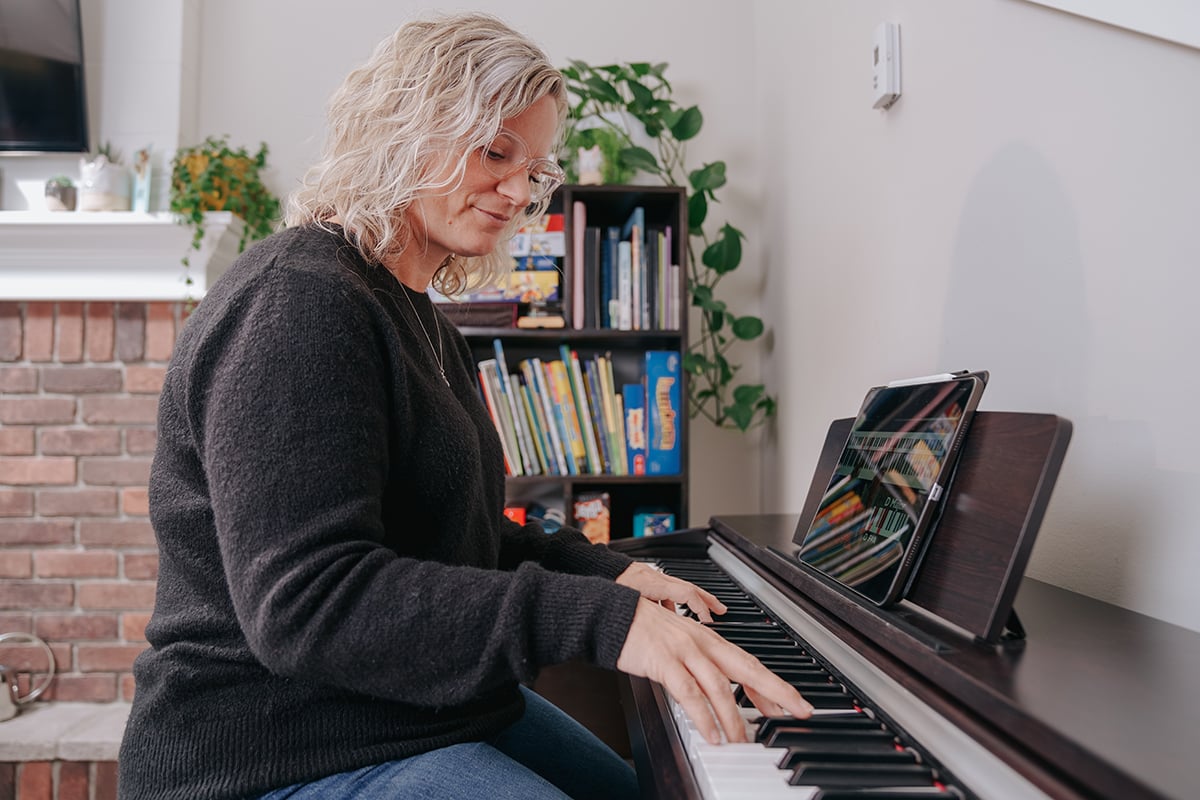
If you’ve ever wondered how to learn piano by yourself, you’ve come to the right place. Not everyone can afford lessons or has the time and resources to commute to lessons every week. If this describes you, there are ways to learn piano on your own!
In this article, we’ll cover the key skills you need to develop as a beginner piano player. We’ll share some free resources, and we’ll also give you tips on how to overcome challenges.
Inspiring tutorials. Fascinating articles. Exclusive interviews. We create piano content anyone, anywhere can enjoy for free. Don’t miss out, sign up for more free lessons.
The first thing you have to do is also one of the hardest: buy a piano.
We have tons of resources on how to buy a piano and the difference between a piano and a keyboard. But to summarize, here are some quick tips:
ALWAYS try a piano before you buy it. Piano preference is very personal, and just because an instrument is expensive doesn’t mean it’ll feel good for you. Try a variety of instruments and pay attention to how the keys feel under your fingers. This is called action and it’s a very personal choice.
Acoustic pianos aren’t necessarily better. Today’s digital pianos can closely mimic the feel of an acoustic piano. They also come with a lot more features and are a fraction of the price.
Get 88 fully weighted keys. 88 is the standard size of keyboard. If you get less than that, you’ll quickly run out of keys even as a beginner. “Weighted” means the more pressure you apply to the keys, the louder you can play. This feature is essential to developing good technique.
If you’re not sure whether you’ll pursue piano in the long run, it’s okay to get an entry-level piano and upgrade later. You can also rent instruments or rent studio space.
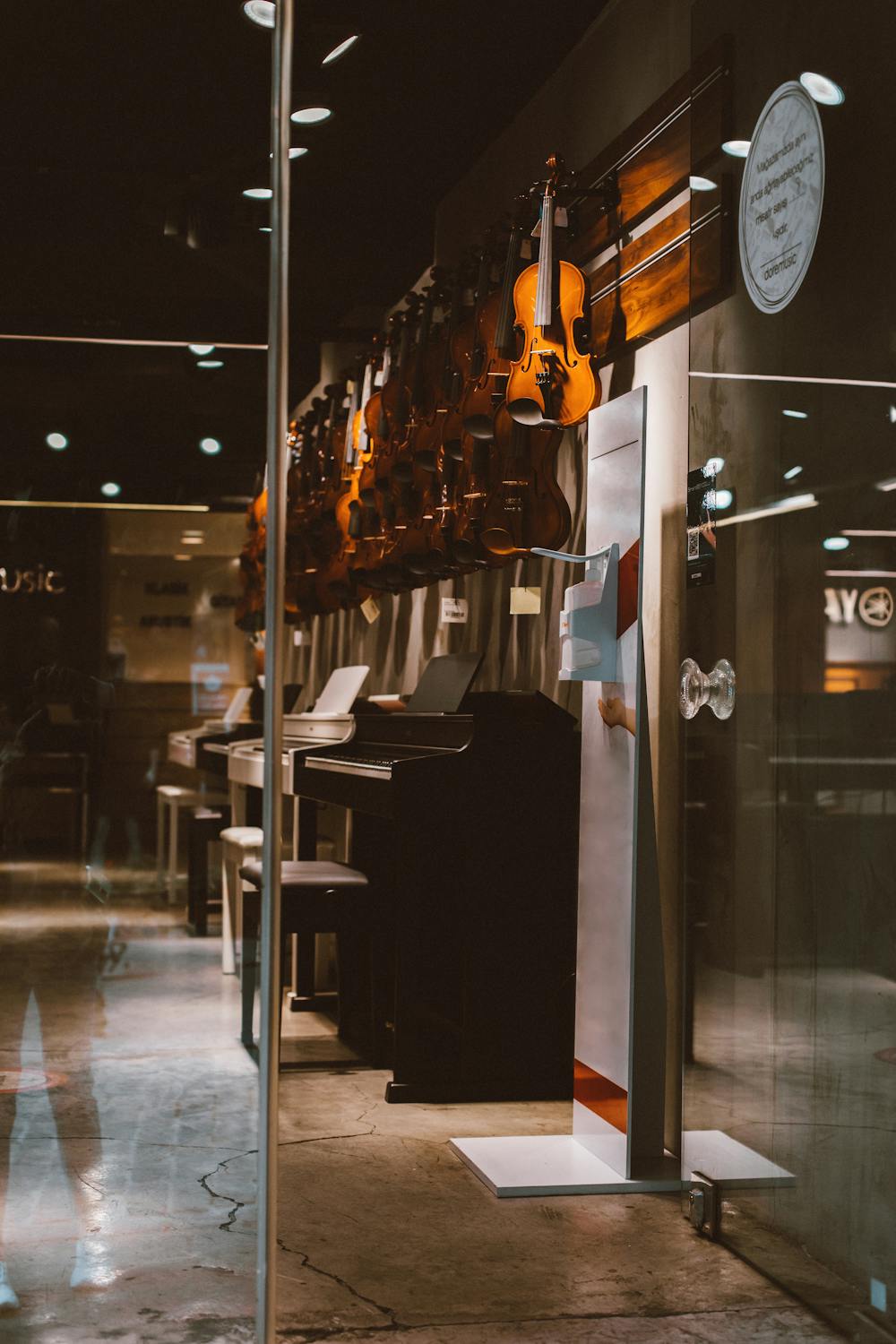
Helpful lessons:
For generations, there was only one way to learn piano: get a private teacher and learn classical piano.
Today, we have many more options, from online learning to traditional conservatory approaches. Here are three of the most common methods you’ll come across:
The Classical method is tried and tested, but it does have its limitations. Classical piano emphasizes technique, sheet music literacy, and learning works from the great composers. Depending on the specific approach, there may be less emphasis on theory and ear training, though a well-rounded method should include these topics. Classical methods are unlikely to explore pop music, jazz, and improvisation.

In this method, students learn that chords are the foundation of music and build from there. With less emphasis on sheet music and more on ear training and free improvisation, this may be a more relevant approach to those who want to play the songs they hear on the radio. There is less emphasis on technique and sight reading, but students can often play a basic version of an entire song on day 1, which is very rewarding! This is the method used by many online teachers (including Pianote).
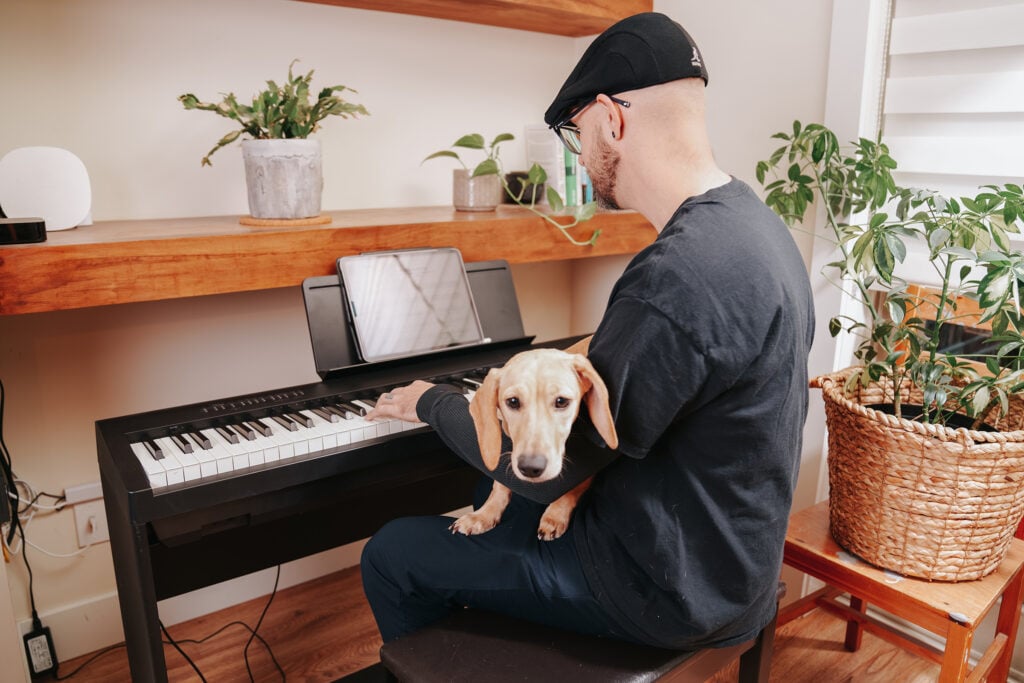
This method typically involves using a software that “gamifies” the learning experience. For example, a note appears on the screen and you have to play it on time. This method is excellent for small children and casual learners who want to make music fast. But it isn’t ideal for understanding how music works on a deeper, more meaningful level.

Helpful lessons:
 If you struggle with reading music, you’re not alone! Did you know you can play hundreds of songs without standard notation? We’ll show you the secrets traditional lessons won’t teach in a 100% free webinar. It’s open to all ages and ability levels. Just show up and have fun!CHECK IT OUT
If you struggle with reading music, you’re not alone! Did you know you can play hundreds of songs without standard notation? We’ll show you the secrets traditional lessons won’t teach in a 100% free webinar. It’s open to all ages and ability levels. Just show up and have fun!CHECK IT OUTNow that you have your piano, the first thing to master is how to sit at the piano comfortably and effectively. Then, get to know your keyboard.
For more info on proper piano posture, check out this lesson with a chiropractor. Some basic tips:
We have more lessons on how to navigate the keyboard, but here are some quick tips:

Helpful lessons:
Scales are a building block of piano music. You’ll find them in songs all over the place, from classical to jazz to rock and pop. Drilling scales can feel dry, but it’s incredibly worth it when you can dazzle your friends with a lightning-fast run up and down the piano.
The first technique you should learn as a brand new piano player is the five-finger scale. It’ll introduce you to a fundamental movement in piano playing.
To play this, put your first finger (thumb) on middle C, your second finger (pointer finger/index) on D, and align the rest of your fingers with keys. Then play these notes with each finger one by one, like this:
Practice this a few times, then try starting the scale on a different note, such as G.
Once you master five-finger scales, it’s time to start learning octave scales. To play a scale from C to C, you’ll have to learn a few moves: the thumb tuck when you’re going up the scale and the crossover when you’re going down the scale. Here’s a lesson on how to play octave scales with both hands.
Learning how to play scales up, down, and with both right and left hands will be a tight learning curve, but it’s a foundational skill you’ll use for the rest of your piano playing career.
Ideally, pianists should know all the major and minor scales. But if you’re just beginning, start with the basics: C Major, A Minor, G Major, D major, F Major, and B-Flat Major.
Contrary to popular belief, you don’t need to know how to read sheet music to become a good piano player. In fact, some of the world’s most accomplished musicians, including the Beatles, never learned how to read sheet music. That being said, understanding music notation will open up worlds of opportunity. Knowing how to read music is like knowing a second language; so long as you have the sheet music for a song, you can play anything!
Get all the details on how to sight-read by checking out this free lesson. Or try Sight Reading Made Simple if you’d like more structure.
Some key concepts to learn:
Sight reading can be overwhelming at first, but over time, you’ll begin to recognize patterns and you won’t have to read every single note. Start looking for patterns today like scales (one note after the another) and various chord shapes.
Helpful lessons:
Because we don’t have to tune our instruments, ear training can fall by the wayside when it comes to piano players. But don’t neglect your ears! Ear training is super important—after all, listening is half of what music is all about.
Being able to play a song just from ear may seem like a magical talent, but it’s a skill anyone can learn. One way to do this is by learning how to associate intervals with popular songs, then using intervals to figure out your favorite songs by ear. Singing along with what you play will also boost ear abilities, and you don’t need to be a wonderful singer to benefit. Ear training is something you should continue practicing for the rest of your piano journey.
Helpful lessons:
Chords are the foundation to Western music. If you break apart a song, it all boils down to chords. Know chords, and you’ll have the keys to unlock virtually any song.
Now, there are tons of chords in every key and even more chord types. This can be overwhelming for a beginner, so we suggest learning the Big Four chords to start:
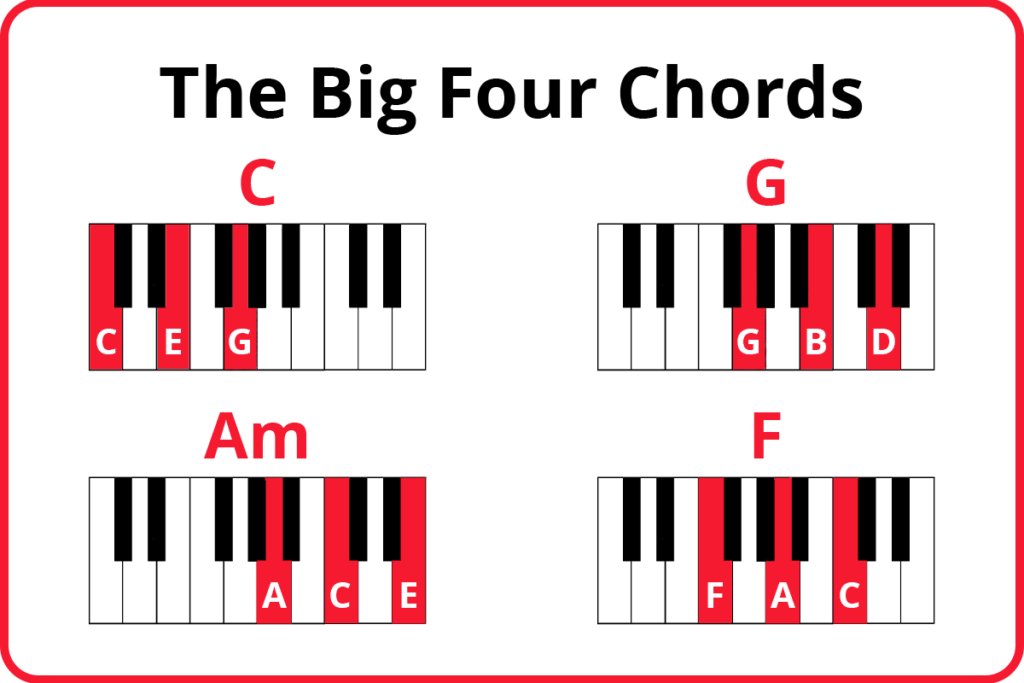
If you know these chords, you can start playing dozens of pop songs, such as:
There are many concepts tied to chords. Here are some concepts in a rough easiest-to-hardest order:
Helpful lessons:
One of the most common questions we get asked is how to play with both hands. Playing hands together is hard, and if you struggle with it, you are far from alone. Your brain knows what it’s supposed to do, but your hands just won’t listen! Some tips:
Use scale and chord inversion practice to sharpen your hand independence. These drills aren’t just for training speed!
If you use sheet music, draw lines connecting where notes match up. Sometimes, having something visual to refer to can help with hand independence.
Practice hands separately first. Be able to fluently play something hands separate before you put your hands together.
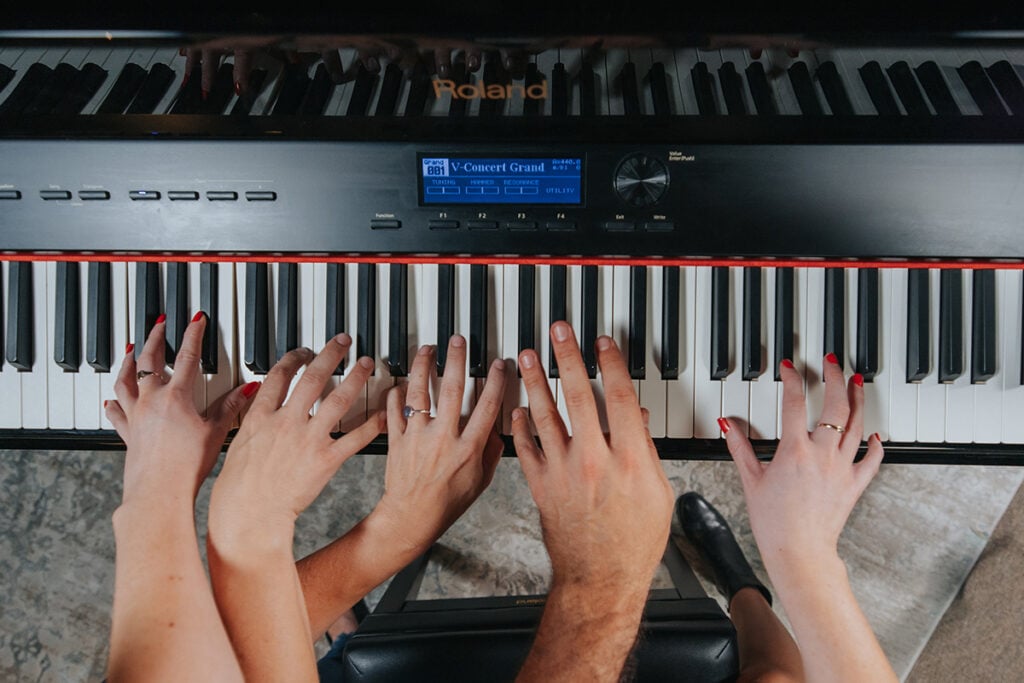
Focus on rhythm. Breaking down the rhythm, such as writing “1 + 2 + 3 + 4 +” in your sheet music can help. Here’s how to count complicated rhythms on the piano.
Do exercises specifically designed for hand independence. This includes your chords and scales played hands together. If chords and scales are too boring, try Hanon exercises. We also have tons of hand independence exercises for beginners in our Technique section.
Be patient. Even seasoned pianists struggle with hand independence. Learning how to coordinate your hands will take time, perhaps more time than you expect. And that’s totally normal.
Helpful lessons:
Learning how to play piano by yourself is a challenge! But it doesn’t have to be a lonely, frustrating, or unnecessarily grueling one. Here are some tips to help keep you grounded.
This is my favorite advice from Pianote Coach Sangah Noona. We are inundated with educational content every day. Every time I open YouTube, I find a new pianist who claims their method is the method. Of course, some methods are better than others, but starting and stopping too many methods can distract you from progressing.
Do explore and see what’s out there. But once you find a method that appeals to you, try it for a reasonable amount of time (say, a few months) before throwing it out.
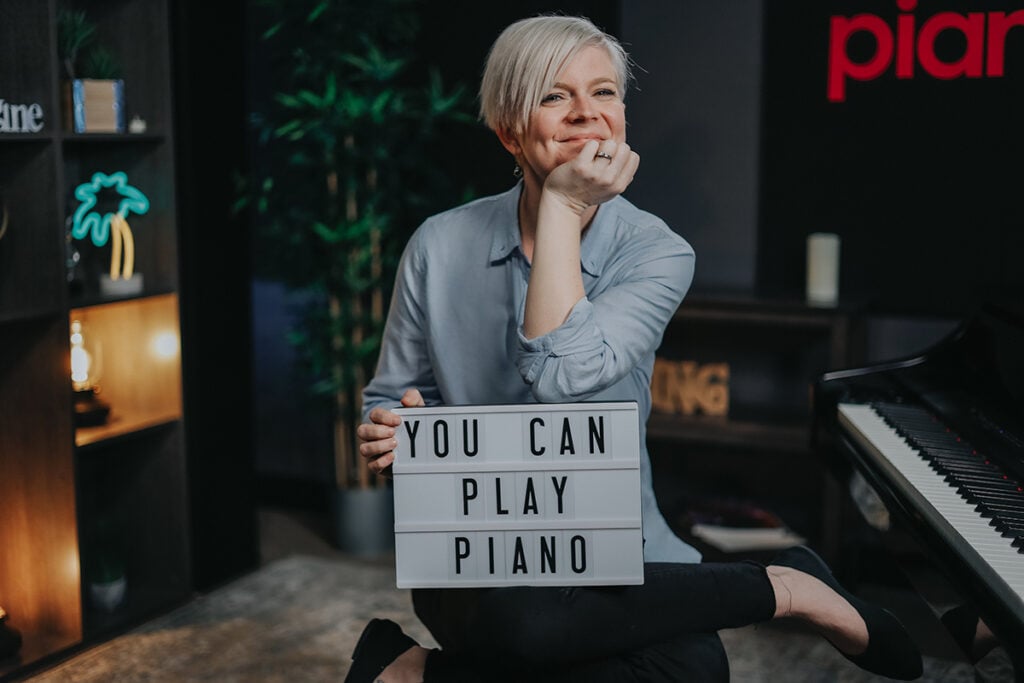
Piano will seem really fun at first, but there will be tougher times. You won’t feel as good, you’ll feel frustrated, and you may even be tempted to quit.
It helps to be emotionally prepared for when this happens, because it will happen. That way, you won’t be taken by surprise and will be less likely to quit. Because feeling this way is totally normal.
S.M.A.R.T. goals are Specific, Measurable, Attainable, Relevant, and Timely. So, set a goal like: “I will play Mozart’s Piano Sonata No. 16 by February of next year. It is an attainable goal because I can play pieces slightly easier than Piano Sonata No. 16. And it’s relevant because it is one of my favorite pieces of all time and I want to perform it for Valentine’s Day.”
Pianists tend to be lone wolves, but it really doesn’t have to be that way! Joining a community can help you progress a lot faster, pick up new ideas, and develop an important skill: playing with others.
Not everyone is in a position to join a band, but we encourage piano players to join online communities. Talk through problems with pianists who have been there and done that, get shopping advice, and maybe even discover new music. (Psst: If you want to learn piano and join a community at the same time, give Pianote a try!)
Finally, when the going gets tough, remind yourself why you wanted to learn piano anyway. Whether it’s to bond with someone you love, because you enjoy learning, or because you simply adore music—remind yourself of this reason and let it be the fuel that propels you forward.
Piano is a lifelong journey. Even professional, concertizing piano players improve year after year. The learning journey never stops. And it can take a while! So, be patient, relax, have fun, and enjoy the music.
Your musical journey starts today: try Pianote and get access to drum, vocal, and guitar lessons too!
Charmaine Li is a Vancouver writer who has played piano for over 20 years. She holds an Associate diploma (ARCT) from the Royal Conservatory of Music and loves writing about the ways in which music—and music learning—affects the human experience. Charmaine manages The Note. Learn more about Charmaine here.
/marketing/pianote/promos/april/banner-bg-m.webp)
We use cookies for traffic data and advertising. Cookie Policy »
/marketing/pianote/promos/april/banner-title.webp)